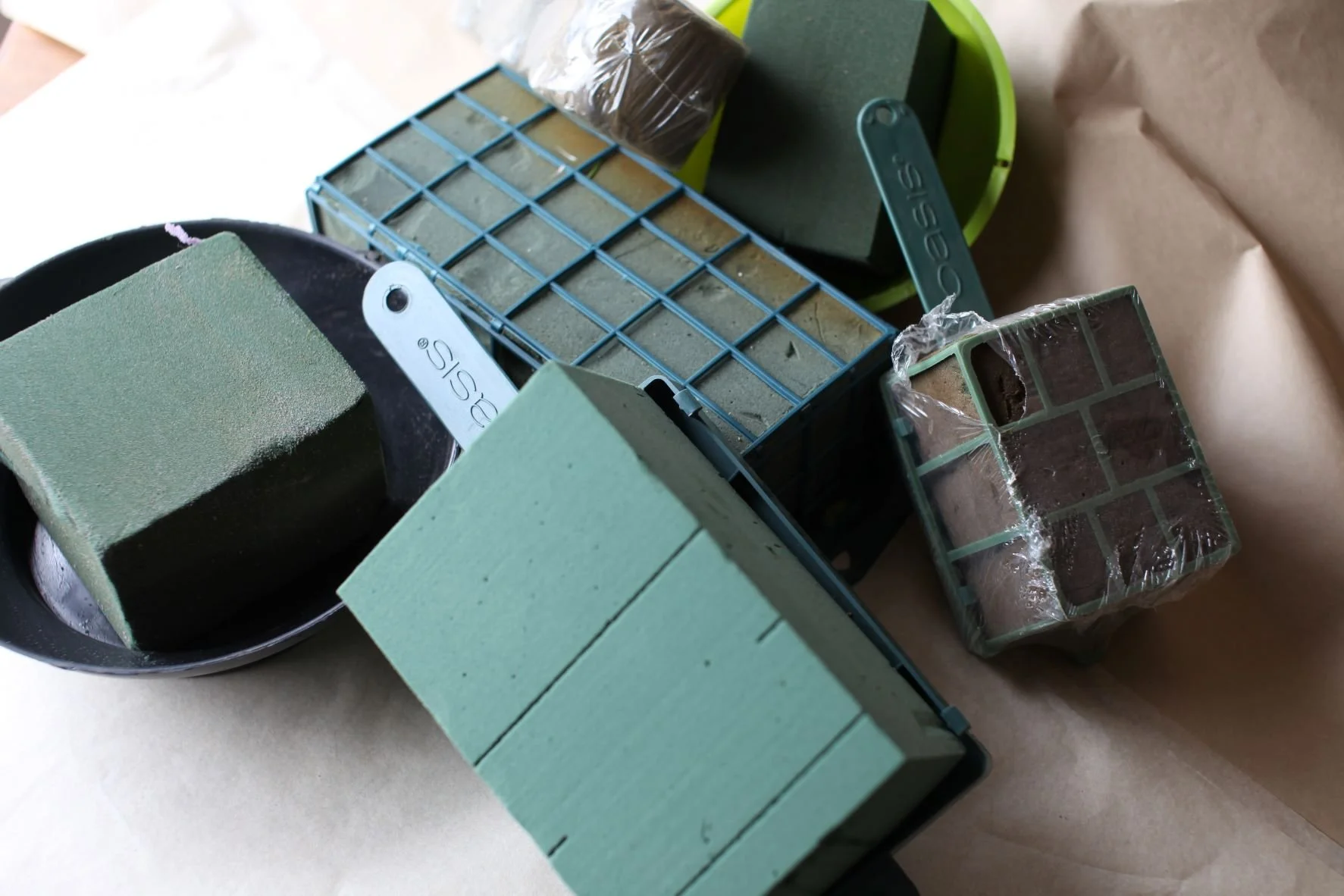Sustainable Floristry - Why It Matters
When thinking about harmful environmental practices, it might not seem obvious to consider the wedding and flower industry — which, together, celebrate beautiful events and gorgeous blooms. But annually, the global floral industry produces 100,000 metric tons of plastic waste - that’s over 220 million pounds of unrecyclable plastic. ( whatonearth@cbc.ca)
Why is that? In the 1950s floral foam was discovered and put into production. It revolutionized the floral industry by creating a medium for holding, hydrating, and suspending all kinds of flowers and greenery. Floral foam is still the number one design mechanic used for weddings and events, even though its detrimental effects on the environment have become more and more publicized.
Each block of foam contains approximately 10-12 plastic kitchen garbage bags. The foam, unlike solid plastics, is highly degradable - meaning it dissolves quickly, spreading polluting microplastics into our waterways, landfills, soils, and the air we breathe.
I attended a lovely wedding recently in which foam had been used for all the flowers and installations - centerpieces, bouquets, arbors, floor arrangements, and suspended ceiling flowers. Just for my own information, I quickly calculated that about 146 foam blocks had been used for the flowers, equaling about 1500 kitchen garbage bags - in microplastic form.
The floral industry is trying to change and change takes time. Some florists only use floral foam now and then, or not at all. What we’re doing at Narrow Path is only using compostable, recyclable and reusable ingredients for your special day. And one day, floral foam will disappear.
But for now, ask your florist not to use foam. You might pay a little more because the compostable foam alternatives cost more, but the outcome no cost to the environment.

